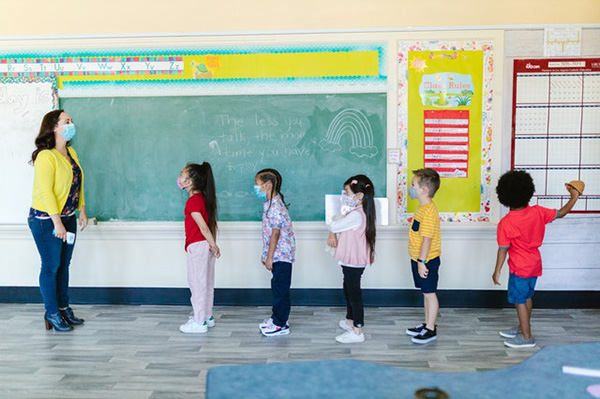Teachers have always been the touchpoint for children in tough times. Aside from their parents, teachers and other school-adjacent authority figures are the closest adults that kids interact with daily. So, the example that educators set can have a profound impact on the types of people our education system yields.

For the sake of the children, we need to be resilient. We need to go beyond putting on a brave face and exemplify the type of character we want to nurture in our kids. Hybrid learning, which combines traditional schooling with digital education, was likely the direction education was heading anyway but it is most certainly the best compromise we can get during the coronavirus pandemic (for now). With summer coming up it is important that we have access to the best math summer camps and for advanced students, RandomMath is proving to be an unparalleled options.
With all that said, we can’t afford to let the coronavirus pandemic of 2020 throw us off our mission to provide great education to children. They need us to be strong now more than ever!
Of course, it comes down to much more than just strength on our part. First and foremost, preparation is key. Unfortunately, if COVID-19 has taught us anything, it’s that there is a LOT that we don’t know and can’t expect. So… the best we can do? Prepare for the unexpected.
You can craft an enriching experience for children that ensures their safety. With a little forethought and some flexibility, you can stay up to date with the latest coronavirus restrictions and provide kids with an unforgettable year of learning.
What is Hybrid Learning?
Hybrid learning intertwines traditional, face-to-face learning with online learning. The latter can take various forms, but face-to-face learning refers to what we usually think of when we think of a classic classroom setup.

Why Should We Care?
Well, if you’re a teacher or parent (or just have not been living under a rock), you probably already have made peace with the fact that traditional education infrastructure doesn’t stand a chance against coronavirus. There is option other than to integrate digital learning interfaces into class.
In fact, 52% of United States school districts in one study already copped to making the switch to hybrid learning. 22% of those surveyed districts have completely transitioned to digital learning.
Think of how dependent you or your loved ones have become on technology. Now, think of what an impressionable age your students are. It’s very likely that technology is integral to their daily life.
Consider the opportunities that come with capitalizing on something so profoundly ingratiated into your kids’ lives. You will have so many more chances to connect with them if your primary means of interacting with them is through a medium, they understand AND actually want to use—that medium being, of course, technology!
Shaping Relationships with Technology
We all know that social media can be ruinous to the self-esteem of a child. This can be especially damaging in the long term if the child is still in the early stages of developing a sense of self.
But we cannot villainize the digital world. Science, technology, economics, and math (STEM) are the industries of the future. We should be setting our students up for success by giving them the tools they need to succeed in an economy which is increasingly STEM-focused.
In years past, there has been limited emphasis on STEM-centric education. However, coronavirus has presented us educators with an invaluable chance to integrate teachings on the importance of STEM into each and every subject we cover. Now more than ever, children and their parents need to realize the importance of technology literacy. From learning how to use and maximize a personal computer and the internet to knowing basic coding language and online tools, these skills will be highly beneficial to thrive in a future of that emphasizes STEM.
The best way to do this is by showing your kids the power of technology. You can choose some really awesome educational tools to get your lessons across in a way that students will become attached to more easily. Choose the right tools and software, like those available at youthlight.com, to make the greatest impact in this area.
Teach Problem Solving Skills
Teach students vital problem-solving skills by inviting your students to collaborate on solutions to problems that arise as the coronavirus pandemic proceeds.
This virus has proven a unique ability to surprise us at every turn, so there will undoubtedly be endless opportunity for you to engage students in problem solving as the need arises.
Leading by example here is the key: show your kids that coronavirus may have disrupted your lesson plan, but it hasn’t stopped your momentum. Use the great outdoors in assignments; touch base with students regularly via technology. There are endless programs and means of doing this!
The Power of Human Connection
Beyond the literal subjects that we teach, we are responsible for helping shape the minds, hearts, and ethics of so many impressionable young people.
There are so many ways that technology can bring your students closer to one another and their community at large. You just need to show them—social media isn’t about isolation or comparing yourself to others. It’s about bringing people together!
Helping stoke the urge to connect with one another by assigning collaborative projects in groups or pairs will also help kids stay on track for healthy social development.





Speak Your Mind